Mariella Hunt's Blog, page 2
December 15, 2024
31 Years Old & Reading Fairy Tales
I remember when I first began writing in this blog. Recently, I received an email from WordPress informing me that my blog was over a decade old. I believe the number is verging on thirteen years now; while I have been inconsistent in updating it, I have never stopped writing, and in 2025 I’m going to make (another) concerted effort to keep you all informed about my creative pursuits.
Today was my 31st birthday. I went with my mom and brother to a fish restaurant, where I met with a very friendly orange fish named Shipwreck who behaved rather like a little puppy:
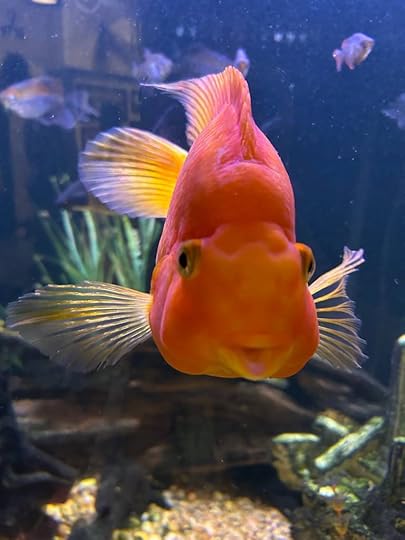
He was a bit of a flirt. I think I’ll return soon and see if he recognizes my face. Isn’t he just adorable, though? He was the happiest creature in the room! (I bet he didn’t know that most of the plates on the tables were carrying bits of fried fish).
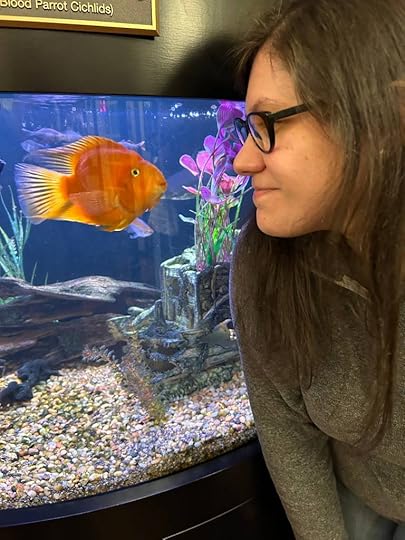
At the young age of 31, though I wish I’d managed to achieve more by now, I am reminded of the C.S. Lewis quote: I am old enough to begin reading fairy tales again, and I’m going to make my reading this coming year more intentional. Of late, I’ve mostly been reading things that were popular, for the simple purpose of learning why they are popular.
Some day you will be old enough to start reading fairy tales again.
— C.S. Lewis
In 2025, I’m going to read classics, such as Victor Hugo and Emile Zola. I’ve always been more interested in the classics; they help shape my writing, I think, more than new books do, though there are certainly new books that are worth reading.
If you think it’s been quiet here lately, you’re right. I’ve spent more time on Substack, where I am weekly posting works of nonfiction as well as weekly chapters for my latest serialized novel, The Graveyard House, which I hope will be ready for a 2025 Halloween publication. I did not publish any new books this year–at least, not in paper form–but it was an important year for gathering ideas and honing my skills.
Check out my Substack newsletter; early next year, I’ll also be releasing the chapters of my completed pirate story, Davy Jones’ Daughter. I am also doing the research in hopes of possibly starting a book themed podcast in the spring. I will keep you updated about this.
If you would like to support any of these pursuits, I have started my Buy Me A Coffee page.
Click here if you wish to make a donation so that these things can be possible.Expect for this blog to be updated weekly or biweekly from now on; I’m doing better with keeping punctual.
I hope that 2024 has treated you well; we’ll keep in touch this coming year!
-Mariella
November 25, 2024
Review: His Excellency by Joseph J. Ellis
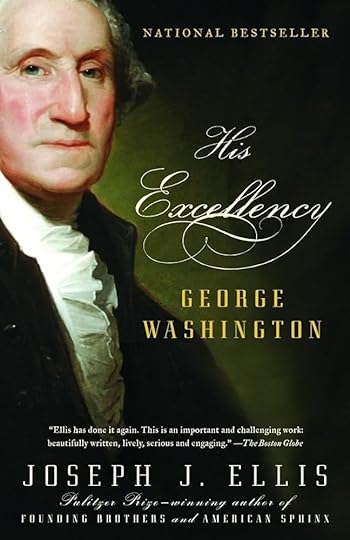
In many aspects, George Washington is a mystery to us, despite the many books that have been written about him. He hadn’t even died yet before myths began to emerge surrounding him.
His Excellency by Joseph J. Ellis is a concise biography of a man who has had volumes dedicated to him since the founding of this country.
It portrays Washington’s younger years, describes moments when Washington had to use his aloofness to conceal a great passion, for he is described as a passionate man.
Ellis points out things that were clearly myths, or are at least dubious to history—for instance, the supposed cherry-tree incident.
He also points out Washington’s human side, mentioning things such as the love that he harbored early in life for the married woman Sally Fairfax. Ellis is also frank about Washington’s obsession with buying land, and the fact that he was in part motivated to marry the widow Martha Custis because she was wealthy.
But he also speaks of the man’s kindness, the readiness with which he cared for Martha’s children while unable to have children of his own.
The father of our own country could not have natural children; he was to parent something greater. All Americans have the privilege of being able to claim him as our Founding Father.
Washington was not perfect, but he possessed incredible discipline, which he needed in order to keep at bay the energy which would help him win the war.
I know more about him now that I have read this book, but still feel I don’t know him enough.
I’m eager to find more books about him; there will never be another leader like him, flaws and all.
His Excellency is not so long as to be intimidating. It covers important points in a readable style, an easy-to-follow narrative.
Our country is built on the courage of men such as him, but of all the men who could have been chosen to do the job, most of them pointed at him to carry out the task: Washington, the one man of who very much did not want to do it.
Or did he?
We shall never know exactly what he thought in those most intimidating moments.
But we do know this: he won, and so did we.
November 20, 2024
Historic Bite #2: Maude Fealy, Silent Film Actress
Who was Maude Fealy, the beautiful silent film actress whose photos continue to circulate today?
Books, music, artwork—humans have always sought respite from ordinary life in escapism. Before the cinema existed, families would gather around the fireplace, reading passages out loud from novels for everyone to enjoy.
Though movies are still a new form of entertainment, acting has long been a popular form of self-expression. People had gathered at theatres for centuries to watch stories on stage before the cinema we know today was born. Though Shakespeare’s works were the best-known, they were by no means the only stories enjoyed by audiences.
The late 19th century was a turning point for actors and theatre. It was the era when the silent movie was born. In 1878, the first moving picture, “Sallie Gardner at a Gallop,” was filmed by Eadweard Muybridge.
Though barely more than a minute long, it filled viewers with awe. If moving pictures were possible, what would come next? Could people watching that horse in movement imagine a Hollywood would exist one day?
Maude Fealy was one of the first actresses to achieve considerable fame. She was born in 1883, when the new world of film still generated wonder. The industry had grown since “Sallie Gardner;” viewers would soon be able to enjoy longer films featuring plots, though the storylines remained simple.
Born Maude Mary Hawk in Memphis, Tennessee, Fealy began her work as an actress on the theatre stage. She made her debut playing various children’s roles at the Elitch Theatre. Her striking looks caught the eye of dramatist Henry Churchill de Mille, who offered her a role in several plays, including The Lost Paradise. She captivated the audience’s attention with her angelic looks and rich brown hair. This beauty helped catapult her into the world of filmmaking; soon she would become an easily recognizable celebrity.
Fealy’s first appearance in a silent film was in 1911 for Thanhouser Studios. Her performance was such a success that they featured her in eighteen other films between 1911 and 1917. After this period, she did not appear in another for seventeen years. That doesn’t mean she remained idle; she devoted this time to teaching the art of cinema and theatre to others, offering classes in many cities throughout her life.
At the age of fifty, Fealy returned to film by acting out a series of secondary roles. Though she no longer possessed the nymphlike beauty of youth, she was respected as an important member of the film community. She was honored with invitations to appear as a special guest in pageants. She was also asked to present lectures about acting, speaking in classrooms to eager listeners.
Fealy did not have as much success in her personal life, seemingly unable to find true love. She first married a drama critic named Louis Hugo Sherwin in 1907, keeping their nuptials secret because her mother wouldn’t approve. Maude and Sherwin divorced in 1909. Later, she married silent film actor James Peter Dunkin, but they divorced in 1917. Her last marriage was to John Edward Cort. It ended in an annulment, and she did not try again. She never had children.
Despite her poor luck in the realm of romance, Fealy found fulfillment in her legacy as one of the first celebrated actresses. Her passion for film ignited similar ambitions in young, aspiring actors.
Maude Fealy died at the age of eighty-eight on November 10, 1971, and is interred in the Abbey of the Psalms at Hollywood Forever Cemetery. Photos of her continue to circulate on the Internet, rendering her iconic beauty immortal; with this post, I hope to add a story to the face that many have come to admire.
I hope that you enjoyed this bite of history; if so, please consider subscribing to The Literary Ladies’ Tearoom for more stories about authors, actresses, and outstanding heroes!
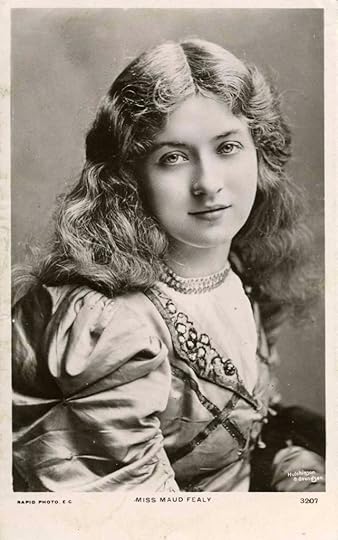
November 19, 2024
Historic Bite #1 – Boticelli’s Muse
Who was the woman that posed for Botticelli’s Birth of Venus?
One of the most famous pieces of Renaissance art is The Birth of Venus by Sandro Botticelli. It depicts the goddess emerging from the sea on a giant shell, surrounded by two figures preparing to dress her in robes of silk. She covers herself modestly while waiting for her clothing to arrive. Her red hair is caught in the wind, as if toyed with by a lover.
Who was the model captured in this painting? She was an Italian noblewoman from Genoa named Simonetta Cataneo, later Vespucci. Born on 20 January, 1454, she married a Florentine merchant named Marco Vespucci, the wealthy cousin of Amerigo Vespucci, who would eventually give his name to the New Continent.
After moving to Florence with Marco, Simonetta became one of the best-known women in the city due to her intellect and looks.
Her arrival was timely: they were in the midst of the Golden Age of Florence. Renowned artists from all over Europe recognized it as the place to be if they wished to have their work seen. Art was more than a passion; it was a competition. They all wished to outdo one another.
It wasn’t long before one of these artists asked Simonetta to model for him. The artist was Sandro Boticelli.
Her time as an “it” girl was rife with conflict. Soon after she began modeling for Boticelli, her jealous husband began to suspect his wife and the artist of having an affair. It is true that Boticelli was infatuated with her—the proof is in how many paintings of his depict a woman with red hair.
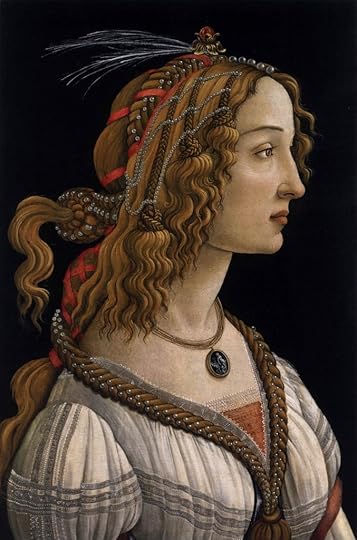
However, her most prominent suitor appears to have been Giuliano de’ Medici. When Marco discovered this, he demanded that she renounce her love for de’ Medici. Simonetta refused, so Vespucci imprisoned her, not caring that she was at the time severely ill with tuberculosis.
Vespucci allowed de’ Medici to be with Simonetta as she was dying. She passed away at the young age of twenty-two on 26 April, 1476, but her face has been rendered immortal by Boticelli in his iconic pieces featuring her.
Giuliano de Medici was assassinated shortly after Simonetta’s death. Furthermore, no solid proof of an affair between them was ever produced.
As for Boticelli, he requested to be buried at the next to Simonetta’s tomb in the church of Ognissanti after his death in 1510. When she was alive, Simonetta had all of Florence at her feet; after his death, it was the artist himself who achieved the honor of staying there.
I hope that you enjoyed this small bite from the past.
To learn more about women and art in history, consider subscribing to The Literary Ladies’ Tearoom!
October 18, 2024
Mary Shelley: An Introduction & Her Dream
We have a new guest at Literary Ladies’ Tearoom this month! For, what else can I call it when a character knocks at the door, insisting to be let in? Insisting to be ‘interviewed’? Insisting that it is now her turn to be heard?
Last week I completed a three-post series on Beatrix Potter and her fascination with fungi. For reference, I read Beatrix Potter: a Life in Nature by Linda Lear, a sprawling biography laden with detail, including excerpts from letters and journals. I felt curiously empty when I finished reading, as if I had said farewell to a good friend.
I’ll “see” Beatrix again when I read the second biography about her that I’ve acquired. Meanwhile, I find myself ‘seated at the tea-table’ with another impressive woman. She is also a writer; she also has an interest in the sciences, despite society discouraging such pursuits in ladies.
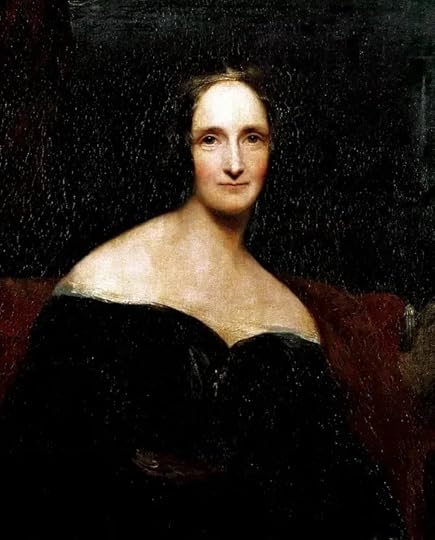
Her name is Mary Shelley, and she’s got quite a lot to say. I own the Penguin Classics edition of Frankenstein, and I read the introduction which tells the story of her life. Though brief, it is a gem of an introduction. I learned a lot of things about her—and her family!—that made me want to write something of my own.
My friend Hannah and I decided to create a classic novel book club called Teacups & Tomes. Frankenstein was selected to be the first book. Our group will be going over it throughout the month of October (and November’s book will be Little Women, hosted at Hannah’s Substack!).
As I read Frankenstein, I will be listening to Mary and posting about her, much like I did with Beatrix. I also have a couple of biographies I am eager to scour for that one tale, much like Beatrix with her fungi, that will shed a greater light on Mary as a person.
I’ve got some fascinating companions, indeed.
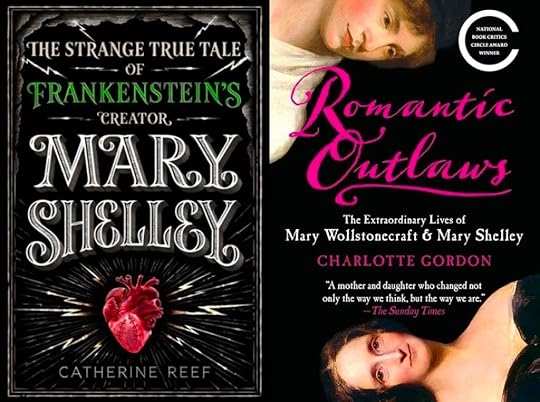 Two books I am reading in my search for Mary Shelley
Two books I am reading in my search for Mary ShelleyI’ve read Frankenstein before, but it was long enough ago that I remember little about it, except for that final scene. It will be an enjoyable experience to revisit the story with friends, exploring the brain-child of a woman who was both brilliant and controversial. If you would like to join our read-along, request to join the private Facebook group—or simply comment along here.
Mary Godwin was born August 30, 1797 in Somers Town, London, to an unconventional family. While only one of her parents survived to bring her up, the unorthodox nature of her environment must have soaked into her as she entered womanhood, for she went on to live a life just as scandalous. She married the eccentric poet Percy Bysshe Shelley against her father’s wishes and ran away to the continent with him, which is where Frankenstein’s story would later begin.
Her mother, Mary Wollstonecraft, had become notorious for using her voice to protest the treatment of women as second-class citizens. In 1794 she gave birth to an illegitimate daughter named Frances, who would later be cared for by William Godwin along with the younger Mary. Wollstonecraft is known for her treatise A Vindication of the Rights of Woman, one of the earliest works of feminist philosophy.
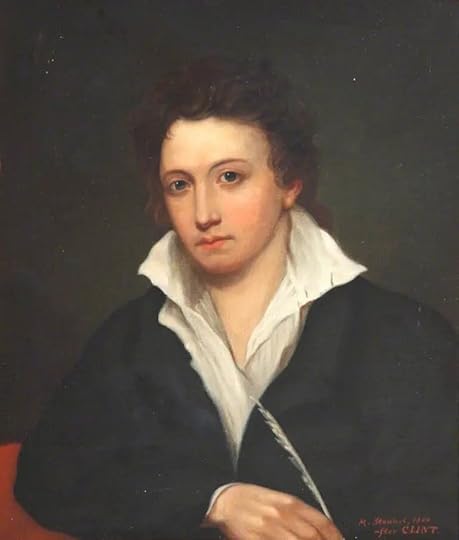 Percy Bysshe Shelley
Percy Bysshe ShelleyYoung Mary’s father, William Godwin, was a political philosopher who also raised eyebrows. This was a time of change in society, especially with regards to thought and morality, and he was one of the most vocal speakers against tradition.
William Godwin did not believe in marriage, calling it an unfair institution. He and Mary Wollstonecraft were together for several years before she became pregnant with their daughter. Only then was he compelled to break his word, wanting for his daughter and the woman he loved to have a secure life.
Tragically, Mary Wollstonecraft died from birth-related complications one month after her child was born.
Most bookworms are aware of the circumstances surrounding the penning of Frankenstein. In 1816, Mary Shelley, Percy Bysshe Shelley, Lord Byron, and Mary’s stepsister, Jane Clairmont, had gathered during the summer in the scenic Villa Diodati in Switzerland. They passed their time together telling ghost stories.
One day, Byron declared that they each should write a ghost story. While Mary Shelley took a time to decide what she would write about, her story would become the most famous of those penned during that holiday.
When at last inspiration came for Mary’s ghost story, it was in the form of a dream. The party of four had been engaged in a conversation about the possibility of reanimating corpses—essentially taking the place of God. This conversation so unsettled her that she could not find rest.
In the preface she wrote for her book, Mary Shelley describes her dream:
When I placed my head on my pillow, I did not sleep, nor could I be said to think. My imagination, unbidden, possessed and guided me, gifting the successive images that arose in my mind with a vividness far beyond the usual bounds of reverie. I saw—with shut eyes, but acute mental vision—I saw the pale student of unhallowed arts kneeling beside the thing he had put together.
I saw the hideous phantasm of a man stretched out, and then, on the working of some powerful engine, show signs of life, and stir with an uneasy, half-vital motion. Frightful must it be; for supremely frightful would be the effect of any human endeavour to mock the stupendous mechanism of the Creator of the world. His success would terrify the artist; he would rush away from his odious handywork, horror-stricken. … He sleeps; but he is awakened; he opens his eyes; behold, the horrid thing stands at his bedside, opening his curtains and looking on him with yellow, watery, but speculative eyes.
In this way I shall wrap up this post, using Mary’s own words. There is more to come about her, as I am reading two biographies about Mary Shelley. I do not know how long this series will be, nor if it will focus on a specific thing, like Beatrix’s focus was on her fungi. I know only that Mary Shelley has quite a lot to say.
Recently a post was published on Substack titled The Woman who Invented Science-Fiction. It is well worth the read. I will share the link here so that you can further understand the genius of Mary Shelley.
October 6, 2024
Beatrix Potter: Author and Naturalist, Part III (Conclusion)
To enjoy the complete story of Beatrix Potter’s early fascination with the sciences, read Part I and Part II!
What does it take to create a storyteller? I am sure that some of us would be able to spin a fine yarn without ever leaving their homes or venturing into other realms of art and science.
However, the advice ‘write what you know’ rings true in most situations. A story might fall flat if the author is trying to write something they do not know, or if they try explaining something they have not researched.
Beatrix Potter’s quest to learn about fungi is one example of this. In her case, she was not only writing what she knew; she was drawing it, as well. At the age of fifteen, she became frustrated by the lack of information about fungi in the forests surrounding her family’s estates. Even in the expensive nature books, it was a topic not often covered.
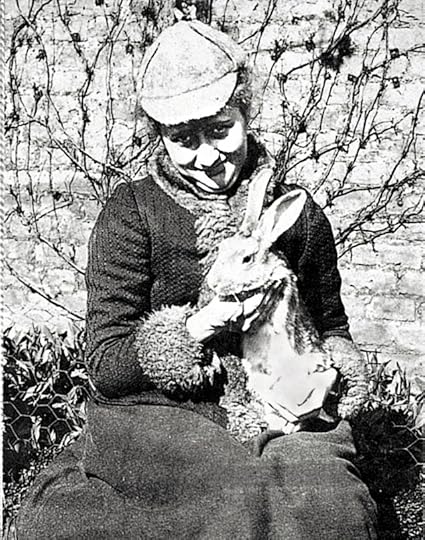
Her studies began in childhood, continuing when she became a young lady. She conducted them independently, unable to consult experts due to restrictions imposed on women at the time.
One of the main hubs for the natural sciences, Kew Gardens, was off-limits to anyone without a ticket (not just women). In order to obtain a ticket, a person needed a recommendation from someone whose name bore weight. In Beatrix’s case, her uncle Henry was the surest source of obtaining a ticket.
After years of pestering, Uncle Henry finally agreed to help obtain the ticket when she was 33.1 (Read the footnote—it’s important, regarding my first two posts.)
My previous post ended with Beatrix and Uncle Henry visiting Kew at last. Before consulting the director, he introduced his niece to several professors. Among them was a botanist named George Massee, who had been the first president of the British Mycological Society.
Massee was now second in command at the Herbarium she was so desperate for access to. He was known as a bit of a romantic; perhaps that’s why he would later be open to conversation with Beatrix. He examined her botanical drawings, though she does not report whether he commented on them negatively or with enthusiasm. He must’ve had some confidence in her work, for his later collaboration would prove to be of great help to her.
After their promising meeting with Massee, Beatrix and her uncle visited the director’s office in search of that elusive student ticket. This ticket would allow her unlimited access the gardens and Herbarium. It would unlock possibilities that had been unthinkable to her previously.
Beatrix later wrote that Director Thistleton-Dyer paid greater attention to Uncle Harry. I imagine that the professor was amused by her portfolio, perceiving her as an overly curious young lady who liked to draw.
We can hardly blame him for this infuriating mindset. After all, ladies at the time were not encouraged to pursue science; ladies were taught to be quiet and marry.
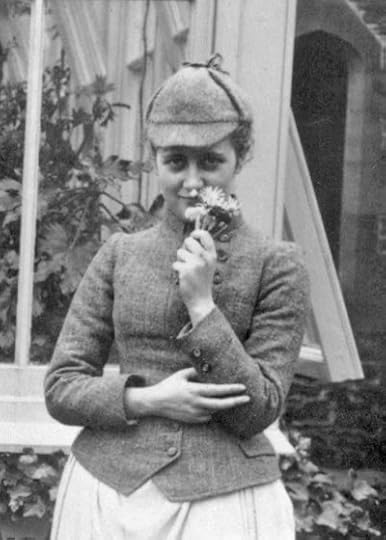
At the end of this exchange, Beatrix Potter was granted her student ticket. However, she wrote in her journal about being patronized throughout the interview. Later, she was ignored completely, as if the director had forgotten she was there.
Well, one might think, at least she was victorious in acquiring her ticket. This is true, but I cannot help but think about how I would feel in her position. It must have been bittersweet, indeed; I became frustrated simply reading about it.
Beatrix would return to Kew Gardens often in the years that followed. She became a frequent face, especially after she was commissioned to make lithographs of insects for a museum. Kew had the fossils and specimen that she needed in order to add detail to her graphs.
***
Though it appears that she cannot escape the title of childrens’ author, Beatrix Potter was much more than that. Her letters and journal entries demonstrate that she was sharp-tongued and iron-willed. It is this attitude that carried her through the many challenges that life presented to her, including heartbreak, loss, and war.
Beatrix Potter was underestimated by everybody, even her family. Her mother and father tried to prevent her from doing things she was passionate about, even when faced with her success. As she grew older, her writing and illustration brought some financial independence. This enabled her able to continue following her dreams, surprising the world—and, perhaps, herself as well.
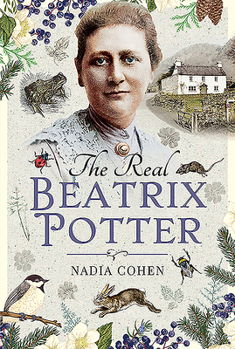
The “fungi fixation” is one of many details that gripped me as I read the book Beatrix Potter: A Life in Nature by Linda Lear. It is brilliant book, detailed in recounting the most significant moments of Beatrix’s life. I wrote these posts because I thought more people should know about her impressive childhood hobby. It would not remain simply a hobby; later in life, she would become a champion of wildlife conservation, purchasing land to save the flora of the countryside that she had loved and studied.
Having told my readers about this chapter of her life, I say to Beatrix, “Farewell, for now.” (Mary Shelley and Clara Schumann are demanding my attention next, and I find I can’t say no to either of them).
In a few weeks, I will begin The Real Beatrix Potter by Nadia Cohen, seeking more of her story. I wish to understand her life from a different perspective as I plan my longer essay. The ultimate goal is to help readers appreciate that Beatrix achieved things aside from The Tale of Peter Rabbit.
She was an author, of course, but she was also a resourceful and clever businesswoman, in control of her stories and subsequent merchandise. We admire modern figures for protecting the rights to their work. Beatrix Potter could almost be called the original. She was in charge of her career (at least, as much as she could have at the time, when laws where so different and pitted against women).
I’m eager to present this essay, polished and informative. Once finished, it will be published on Substack behind a paywall. In the meanwhile, I hope you enjoyed these three free posts. I also hope you’re impressed by the great lengths Beatrix Potter went to in the name of education.
Thank goodness young ladies do not need to jump through so many hoops now in order to learn.
Note: I must admit to accidentally publishing misinformation in my first two posts. When I began writing, I believed Beatrix was fifteen when she first stepped into Kew Gardens. Such a misunderstanding took place because the book Beatrix Potter: A Life in Nature is dense, each page rich with detail. This is my first work of nonfiction in three years; researching/notetaking is something I will improve at in time. The moral of the story is be careful with speed-reading!
The fact that Beatrix was ignored as a 33-year-old woman somehow makes the insult worse. I could understand a director thinking a fifteen-year-old’s investigation not worth his time, but at that point, Beatrix was not a child.
October 5, 2024
Guest Blog Post: Writing the “Fae” Way by Victoria Rocus
Like most authors, I am both excited and terrified when, upon hearing that I’m an author, someone will ask, “So what kind of stories do you write?” Suddenly, I become this person with whole worlds and characters in her head who immediately morphs into a tongue-tied, introvert. When you’re an author of fantasy, especially romantic fantasy, there’s this fear that the general population will, at the least, think you rather silly, or at the worse, smile and give you that vague “how nice” before politely changing the subject..
The conversation gets far more interesting when I try to explain that my debut novel is about a female tooth fairy. Their general response is usually something along the lines of, “oh…so you write children’s books.” Explaining that my books are actually romcoms written for adults always raises a few eyebrows. This is because modern pop culture equates a fairy, or “faerie” in its archaic spelling, as a happy, helpful, tiny winged creature, portrayed most famously in the 1953 Disney classic, Peter Pan, and exclusively in the domain of children’s stories. According to mythological tradition, nothing could be further from the truth.
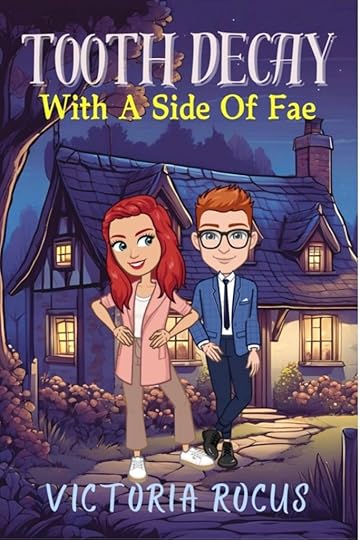
Faeries, or the Fae as they are sometimes called, have been part of oral and written literature long before J. M. Barrie wrote his play about the boy who refused to grow up. There are ancient references to faeries in Greek mythology, also called dryads and nymphs, who it was said were created by the gods and goddesses to care for the well-being of the earth. The earliest mention of faeries in English literature is often attributed to the historian Gervase of Tilbury, who described these magical creatures in his 13th century writings. The concept of faeries, however, were part of the oral story-telling tradition of many cultures for hundreds of years before Gervase was born.
These ancient, mythical creatures are a far cry from the sweet, wood-dwelling benefactors so many are familiar with. Pre-modern Fae folk were originally feared as being magically powerful and quite dangerous, and they could be both kind to humans as well as cruel and mischievous when they felt insulted or ignored. Early Fae were described as human-like, wingless creatures of captivating beauty, and no matter which culture you research, general knowledge argued that it was best to leave the faery folk be, lest you incurred their wrath.
Some of my favorite faery stories are found in Celtic mythology, the old stories of Ireland, Scotland and Wales, which has since become the foundation for the world and character building in my Tooth Fairy Chronicles, as well as its sister series, The Merlin/Morrigan Tales, which is currently awaiting future publication. Originally, these mythological beings were said to live in “faery mounds” found all over Ireland. However,within my own imaginary Otherworld, these Sidhe, a Gaelic word for the mysterious Fae folk, have lived among the human population for over a thousand years, with the Fae Otherworld being separated from the “Mundane” world by a magical “Veil” that can only be breached by those possessing a genetic Otherworldly bloodline. For example, the main character in Tooth Decay With a Side of Fae, Dr. Rosie Parker, D.D.S., is a tooth fairy through her mother’s family tree even while she is her mom’s second daughter, her older sister not possessing a single cell of Fae DNA, and thus born without any magical ability and unable to cross the Veil. In my version of Otherworld social hierarchy, tooth fairies are at the lowest level of magical power and skill, with most of them having a mixed human and Fae bloodline, while their Otherworldly abilities are only available to them from sunset to sunrise due to the interference of the sun’s metaphysical energy. This is the reason tooth fairies have the job they do, collecting the baby teeth at night, which are then used for ritual magic in the Otherworld. Without giving away any spoilers, let me add that in my story, humans in the Mundane world also greatly desire these baby teeth, but that’s all I’m going to say about that in this post. 
On the other side of the magical spectrum lie the Tuatha de Danann, the “ shining ones,” who became the mythical heroes, kings, queens, and warriors of the ancient Celtic world. Most of the writings we have about this race of supernatural beings comes from the literature of the medieval age and were likely written by Christian authors. Thus, the Tuatha de Danann are often described as “fallen angels” who sided with neither God nor Lucifer, and were therefore forever punished by being sent to our earthly world. Other historians of the time consider them to be humans who had somehow found the secret to immortality while conquering the bending of energy to will, i.e., “magic.” Because of these abilities, they were often worshiped as gods and goddesses. There are even some very controversial historians in our modern culture who argue that the Tuatha de Danann were actually alien visitors who sought out human mates and left behind gifted mixed-blood offspring. As I said, that hypothesis is still very much in the minority of educated thinking..
No matter which theory you might find plausible, there’s no denying the stories of the Celtic Fae are captivating. Like their counterparts in the Greek Pantheon, the gods and goddesses of Ireland, Wales and Scotland are portrayed as having the same emotions as their human brothers and sisters. Their tales are rife with burning lust, blinding jealousy, and destructive greed, and it’s no secret that in these old tales the Fae were more than willing to share their “affections” and bloodline with the human population, thus creating a wealth of demi-god characters with a foot in both worlds.
One of my all-time favorite characters is The Morrigan, the goddess of war, destruction, and fertility who had the ability to shape-shift into a raven. Some ancient writings describe her as part of a triple goddess, Badh, Macha and Neiman, representing the feminine life cycles of maiden, mother and crone. She’s undoubtedly one of the most powerful female figures in the Celtic tradition, and one I found I couldn’t resist adding to my stories. In both of my fantasy series, The Morrigan is the current Queen of I Idir (“The In Between”), the Otherworldly kingdom the Fae call home. She plays the role of “Puppet Master” in my tales, pulling the strings behind events that change the lives of her subjects and subtly threatening them when they don’t comply. She’s a wonderful character to write, morally gray while being equally hero and villain.
Celtic mythology is also loaded with tales of other Fae creatures: Brownies, Pookas and Selkies, to name just a few, all with varying degrees of magical ability and roles in the Otherworld hierarchy. I’ve been able to add these colorful personalities and histories to my ongoing stories, making them all subjects of The Morrigan’s kingdom.
Even if fantasy is not in your normal reading wheelhouse, my Tooth Fairy Chronicles offers you a chance to enjoy these fascinating ancient tales without the sword battles and complex magical systems people usually associate with the high fantasy style of Lord of the Rings or Game of Thrones. I often joke that I write “fantasy stories for people who hate fantasy.” My characters regularly move their settings back and forth between the urban modern world of today and the Regency-style Otherworld of my imagination, often leaving professional “Mundane World” day jobs as doctors, lawyers and accountants to cross the Veil and partake in a living fairytale-like existence. As Dr. Rosie Parker, the main character of the Tooth Fairy Chronicles, has been known to say, “Going to I Idir in the Otherworld is like going to a Ren Faire on steroids… where everyone is busy throwing magical energy all over the place.” If you’re looking for something just a little bit different, with plenty of adventure along with some swoony, slow burn, closed door romance, maybe you should give the first book in my tooth fairy series, Tooth Decay With a Side of Fae, a try. I guarantee you won’t be disappointed.
Tooth Decay With a Side of Fae Releasing October 21, 2024 Available for pre-order
Tooth Aches and Wedding Cakes Releasing November 18, 2024
Also available from Serenade Publishing

Author Bio:
Victoria Rocus is a retired educator, accomplished miniaturist, and full-time author living south of the home of country music, Nashville, Tennessee, USA. When she’s not writing new adventures for her imaginary friends, catering beach parties for mermaids, or finding homes for orphaned dragons, she’s building and rehabbing one-of-a-kind dollhouses and accessories, just like her favorite character, Dr. Rosie Parker. Many of these miniature buildings are 1/12 scale replicas of settings from her many fantasy stories. Victoria started her writing career as a weekly blogger while still teaching middle school language arts, and once retired, she’s been able to make writing a full-time adventure, penning several fantasy and romance stories for a popular serial platform currently available only in the US. Tooth Decay With A Side Of Fae is her debut novel and the fulfillment of a life-long dream.
September 21, 2024
Beatrix Potter: Author and Naturalist, Part II
If you would like to support my venture into nonfiction writing, please consider subscribing to my Substack site or buying me a coffee.
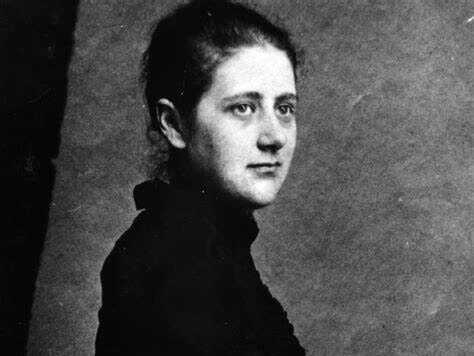
Beloved children’s author Helen Beatrix Potter, whose bunny Benjamin would later be immortalized with the alias of Peter, was not only a creative soul but also determined. Her ventures into the forests surrounding her family’s estates cultivated her fascination for nature. At a young age, she used her artistic skills to draw and color plants and flowers, using her brother Bertram’s microscope to include the minute details.
Note: If you’ve just found this article, take the time to catch up with Part I of this series.
Potter became fascinated by fungi because a lack of information rendered them a mystery. They were not popular topics of study by most botanists at the time. Beatrix could not bear to paint watercolors of specimen without knowing what they were called or how they could be used. Determined that her questions would be answered, she began her first quest.
At the age of fifteen, armed with her sketchbook and will of steel, she set off to Kew Gardens. It was, at the time, a science hub almost completely off-limits to women. She went in with the hopes of speaking to director William Turner Thistleton-Dyer, an expert on tropical plants. He was one of the few who might be able to answer her questions, or grant her access to the resources that could.
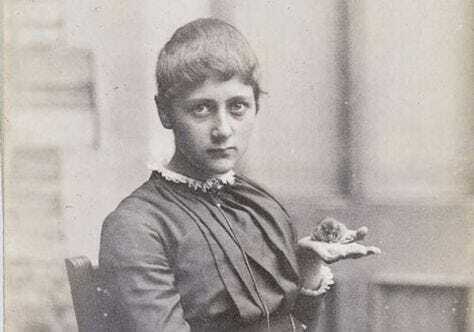 Young Beatrix holding a little mouse, one of her many pets and sources of inspiration.
Young Beatrix holding a little mouse, one of her many pets and sources of inspiration.Beatrix had an astonishing sense of focus for someone so young. During the autumn and winter of 1895, she spent her free time drawing, virtually glued to Bertram’s microscope as she examined her assortment of fungi. Some of her specimen she collected herself; others were given to her by neighbors and friends who were aware of her fixation.
Linda Lear writes in Beatrix Potter: A Life in Nature:
Her objectives had changed from simply assembling a collection of watercolours and photographs to discovering how fungi reproduced. Certain that she could germinate some spores herself, she wanted to study the environment in which they germinated, discover whether or not conditions were the same for each species, what the spawn of each consisted of, and whether or not she could reproduce it more than once. She never articulated a final purpose for her experiments, other than the pleasure of discovery.
Beatrix Potter: A Life in Nature,Chapter 5
These are not activities that we often picture fifteen-year-old Beatrix Potter pursuing. They were far from what was encouraged in well-bred ladies at the time. All the same, she delved into research on the topic for no reason other than curiosity.
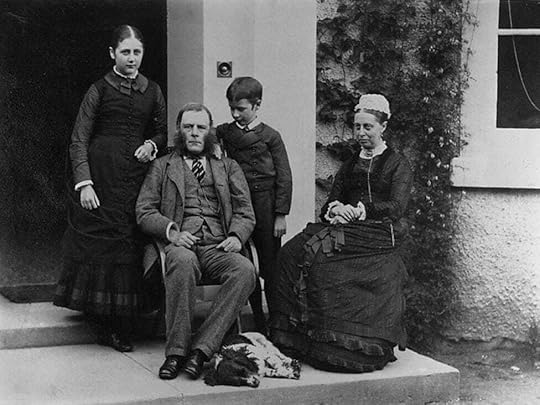 Young Beatrix with her parents and brother, Bertram
Young Beatrix with her parents and brother, BertramWe underestimate the importance of pursuing subjects for the sake of curiosity alone: curiosity, after all, can trigger inspiration. Inspiration brings with it ideas that could change the course of history. But, I digress.
From her visit with Thistleton-Dyer, Beatrix hoped for access to the Kew Herbarium, among other things. However, in order to meet with the director, she needed to be granted a ticket of recommendation from someone whose name bore weight in the field. Fortunately, she came from a well-connected family.
Beatrix’s ticket was obtained from an uncle, chemist Sir Henry Enfield Roscoe, who had been made Vice Chancellor of the University of London. Though the Potters had strained relationships with most of their family, it appears that Uncle Harry admired his niece’s curiosity. I suspect that, as they bonded through conversation, they discovered themselves to be kindred spirits.
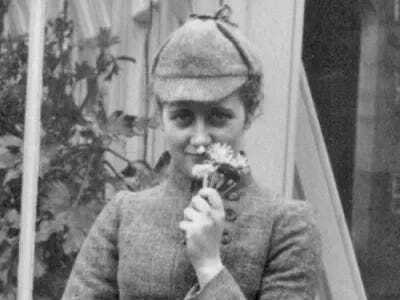
Escorted by her uncle Harry, Beatrix met Thistleton-Dyer at last. She would later write with some amusement in her journal, ‘I think he [Uncle Harry] rather wanted to see Mr. Thistleton-Dyer, but he was most exceeding kind.’ (Source: BP Journal, 19 May 1896, 423-4). Similarly, Thistleton-Dyer probably agreed to the meeting as a courtesy to Sir Roscoe.
According to Beatrix’s journal, Thistleton-Dyer paid polite attention at first. However, when she presented her sketches (which he barely glanced at) and voiced her questions (was he even listening?), his response was unimpressive. Given the attitudes that were common at the time, we must wonder if he might have paid more attention, had Beatrix been a boy.
Did Thistleton-Dyer grant her access to the Kew Herbarium? Was young Beatrix Potter offered any of the resources she’d gone so far to obtain?
In Part III, we will learn how this interview carried out—and whether Beatrix continued to pursue her fascination with fungi, after this quest was through.
September 20, 2024
Guest Post: Author Brittany Fichter on PRINCESS OF THE SILENT MOOR
This week I read Princess of the Silent Moor, a beautiful fairy-tale retelling by the incredibly talented Brittany Fichter. While I’m writing up my review for this story that captured my heart, I asked the author herself to tell us about the book, and shed some light about the fairy-tale that it is based on.
Thank you, Brittany, for agreeing to guest post! This book is one of my new favorites! Purchase the book here!
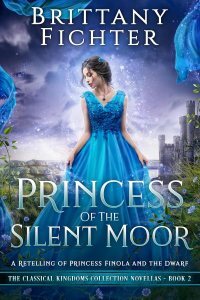
Princess of the Silent Moor is a fairy tale I fell in love with while still in elementary school-probably because it’s not told in the typical linear format that most fairy tales share. We see a sad, sweet girl isolated with an old woman on a lonely moor, and a poor, besotted dwarf who wants to save her. Despite falling far short of the stereotypical fairy tale hero, as his body is weak and his tongue has been kept mute for as long as he can remember, this dwarf has the courage to save the girl when given the chance… despite losing what little strength he has. But that’s when we find the delicious twist at the end, and we learn that not all is as it seems. Nor has it been for a long time.
The idea that the fairy tale had a secret beginning always intrigued and tortured me. I wanted to go back and know what had happened before the beginning of the tale, when the main characters’ lives had been so different. How did they get to the place where the story begins? How did they reconcile their beginning and their end emotionally?
Aside from searching for the answers to those questions, my next challenge was figuring out how to fix this-admittedly gory-story into my fairy tale world. I wanted to retain the true depth of the dwarf character’s sacrifice without cheapening it… and without grossing out my audience. And, of course, there was the issue of the odd little man who acts as a somewhat antagonizing fairy godfather character throughout the middle of the story. I never really liked him as a character, but the story doesn’t happen without him.
Fixing this problem was really a delight. I decided to bring back a few beloved characters from my original fairy tale, Before Beauty: A Retelling of Beauty and the Beast. This gave me the chance to provide the help to the main characters that they needed without fixing the problem via Deus Ex Machina. Basically, I couldn’t have the powerful stranger be so strong that he could simply snap his fingers and fix the problem on his own. It was from here that I built out the rest of the story.
As for the characters, Finola was particularly fun to write. Our family was going through a very stressful time (military life stuff) while I was writing this book, so I lived somewhat vicariously through Finola as I wrote her. Her lack of a verbal filter was particularly fun when I had to bite my tongue and take deep breaths. Declan, on the other hand, was always solid and steady. His character had to be in order to sacrifice for Finola the way he would one day need to.
The Story I Wanted
I had another challenge with Finola as well. As readers, we like to cheer for characters who are proactive. But in the original story, the princess is basically imprisoned on a moor and has little opportunity to fight back against those who have imprisoned her. But I also firmly believe that we don’t have to actively wield a sword or shout at people in order to do something good. We can be brave even in the smallest things. Finola is a free spirit, and throughout the beginning of her life, she actively seeks ways to protect her kingdom from the evil she senses on the horizon. But when it comes down to brass tacks, Finola’s greatest strength is her faithfulness.
Faithfulness is an undervalued virtue in our society-that willingness to stay true to what’s right even when everyone around us is shouting that we’re wrong, or encouraging us to act against our conscience. If we peer back through history and examine all the people who moved mountains, we often find the seed of faithfulness at the very core. And sometimes, that faithfulness wasn’t even their own. It belonged to their mother or father, or a grandparent, or someone else they knew. Our society today often tries to cancel people if they don’t conform to the image society believes they ought to take, and it takes a great deal of courage to remain faithful to what one knows is true.
I think my final favorite thing about this story was getting to feature the “knight in shining armor” trope. And yes, I know it can be cliche. But there’s a reason we fantasy readers are still touched by that overly-shared image of a beautiful woman knighting a man in armor. You know the one I’m talking about. We want to see someone who is good and true riding into danger with his sword drawn. With the news as unpleasant as it often is today, we long for heroes who are honorable and trustworthy, and that hero in this story is Declan.
Between my Classical Kingdoms Collection books, Nevertold Fairy Tales, Entwined Tales book, children’s fairy tales, Clara’s Soldier, My Air Force Fairy Tales, and more, I’ve written over two dozen fairy tale retellings or fairy tale-inspired stories. But I can honestly say that Princess of the Silent Moor is one of my very favorites, despite its shorter length. Writing this book was kind of like stepping back into childhood and handing that hungry little reader the story she wanted so desperately to find. By God’s grace, I somehow wrote it over the length of our crazy summer. And I hope and pray now that despite all that chaos, it’s given other readers the very story they were hungering for as well.
Visit Brittany’s website here, and be sure to check out her books. She has a magical way of spinning stories that feature characters who creep into one’s heart!
-Mariella
September 16, 2024
Hexes & High Society: A Blend of Magic, Gilded Age Intrigue, and Forbidden Romance
Hexes & High Society: A Blend of Magic, Gilded Age Intrigue, and Forbidden Romance
Hello, I’m Julia Crane, a multi-genre author, and I’m thrilled to share a deeper dive into my latest work, Hexes & High Society. This story has a special place in my heart, blending my love for historical settings with a twist of magic and supernatural intrigue. Today, I’ll take you behind the scenes of the inspiration, introduce some key characters, and give you a sneak peek at the cover!
The Setting: New York City & Jekyll Island, Georgia
One of my greatest inspirations for Hexes & High Society comes from the beautiful and mysterious Jekyll Island. Located off the coast of Georgia, Jekyll Island has long been my writing retreat—a place where nature, history, and the sea come together to form an atmosphere perfect for crafting stories. I enjoy the area so much that my family bought a place there, allowing me to escape to write whenever I need inspiration.
For those unfamiliar, Jekyll Island is steeped in Gilded Age history. In 1886, it became a secluded retreat for some of America’s wealthiest families, forming the Jekyll Island Club. Known as the “Millionaire’s Club,” this exclusive gathering brought together the likes of J.P. Morgan, the Rockefellers, Vanderbilts, and Astors. At its height, the club represented one-sixth of the world’s wealth, and the island became a private, luxurious escape for industrial titans and political powerhouses.
I’ve spent years walking through the island’s historic district, imagining the lavish parties and private gatherings that once took place there. But what intrigued me the most were the untold stories—the whispers of the past—and I began to weave those real-life figures into a world where magic and supernatural forces exist right alongside the wealthy elite.
How the Story Came to Life
When I heard about the Kindle Vella contest, I knew it was the perfect moment to bring this idea to life. I was actually on Jekyll Island when the concept crystallized, making the connection even more special. Hexes & High Society is currently available exclusively on Kindle Vella, but I’m excited to announce that the story will also be released in print and ebook by November.
And now, to give you a glimpse into the magical world I’ve created, let’s meet some of the key players in Hexes & High Society.
Meet the Characters
Amelia Aster
Amelia is the heart of Hexes & High Society, a powerful witch from one of the oldest and most influential families in the supernatural world. Raised among the magical elite, Amelia is a master of magic, but her true challenge lies in navigating the treacherous social and political alliances of both the mortal and mystical worlds. As she grapples with her growing feelings for Jameson Cabot, a forbidden romance that threatens everything she knows, Amelia must choose between her duty to her family and her desire to follow her heart.
Amelia’s story is one of self-discovery, as she struggles to reconcile her place in the world with the weight of her family’s legacy.
Jameson Cabot
Jameson is a charming, enigmatic dark fae with a mysterious past. His rebellious nature and undeniable allure have made him a dangerous figure, both in the eyes of the Shadow Guild and in Amelia’s heart. Though their love is forbidden, Jameson’s return to New York stirs up old emotions—and new dangers.
With secrets of his own to protect, Jameson’s motives are always unclear.
Oliver O’Meer
Oliver, a key figure in Amelia’s life, comes from the powerful O’Meer family, known for their mastery of alchemy and their ability to shift forms. The O’Meers have long been influential within the Shadow Guild, and Oliver is no exception. Bound to Amelia by a family rite that is set to take place during the fall equinox, Oliver’s role in her life is complicated. He represents tradition, obligation, and the future her family expects her to embrace.
Oliver is strategic and loyal, yet his deeper motivations remain unclear. As Amelia’s bond with him strengthens in preparation for the rite, her growing feelings for Jameson create a dangerous conflict of heart and duty. Oliver’s presence in her life is a constant reminder of the expectations she must fulfill.
A Sneak Peek at the Cover!
I’m also excited to share that we’re offering an exclusive sneak peek of the cover for Hexes & High Society! The design perfectly captures the blend of elegance, magic, and danger that fills the pages of the story.
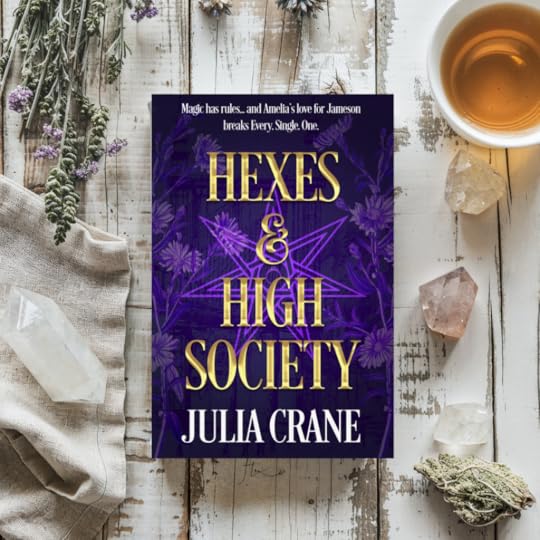
Story Overview
Set in an alternate version of 1889 New York City, Hexes & High Society blends the world of the elite mortals with a secretive supernatural society known as “The Others.” At the center of this world is the Shadow Guild, an exclusive group of powerful magical families who rule from the shadows.
Amelia Aster is thrust into a dangerous game of power and politics when her forbidden romance with Jameson Cabot, a dark fae, threatens to unravel the delicate balance between the mortal and magical worlds. Their love ignites a conflict that forces Amelia to confront both external enemies and the dark secrets lurking within her own family. The Shadow Guild has its own agenda, and as tensions rise, Amelia must navigate dangerous alliances, ruthless rivals, and the haunting legacy of her family’s past.
Can Amelia master her magic and protect those she loves, or will she be forced to choose between love and duty in a world where magic is both a gift and a curse?
Hexes & High Society is perfect for readers who enjoy historical fiction infused with dark fantasy, romance, and intrigue. It’s a tale of magic, power, and the fine line between love and betrayal.
About the Author

Julia Crane is an author across multiple genres, from young adult science fiction to supernatural fantasy. With a passion for weaving imaginative stories, she brings magic to life in her latest work, Hexes & High Society. When not writing, Julia runs her witchy shop, Bespell & Co., in Savannah, GA.
Learn more about her work at juliacrane.com and follow her on Instagram and TikTok at @juliacrane_jc



